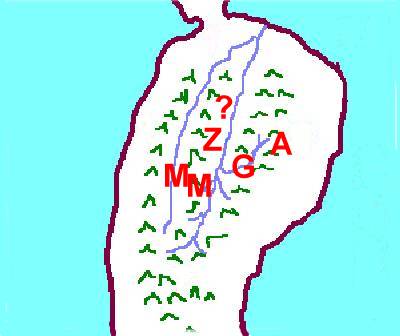Though perhaps not chronologically exact, these expansions and settlements for the most part all occur after the arrival of the people of Alma and the people of Limhi in the land (Mosiah 27:6). When the people of Alma and Limhi come, there is a sudden need to expand beyond already established lands as the population has now began to suddenly expand from the new migration. The first of these, which will be covered, is to place the righteous people of Alma and Limhi. One of these might be the settlement of or the increased expansion of the lands of Melek and if so, I would associate Melek with Alma's people. Melek has already entered into the discussion and we will add little to that except associating it with Alma's people. Melek was a favorite missionary land of Alma the younger, and he was last seen traveling to Melek, perhaps traveling home to the land where his father Alma's people may have first been established in the land of Zarahemla. A romantic notion, but Melek may be considered in this respect.

Limhi's people where preceded in returning to the Land of Zarahemla by the people of Alma. And though technically they were the same people, they followed after diferent leaders and where associated diferently. It is likely therefore, that the people of Limhi would not just seek to locate where the people of Alma had already settled. They would seek after their own, and their own leaders. And the people of Alma where highly righteous while the people of Limhi where a stratified people, from more to less righteous in nature. Now the righteous people of Limhi would tend to follow after a strong righteous leader, and that would be one of my heroes in the Book of Mormon whose name was Gideon. Gideon was the leader that led the rebellion and fought against wicked King Noah in the land of Lehi-Nephi. He gave guiding counsel to King Limhi which aided in freeing his people from the Lamanites. And in his old age he contented against Nehor, the spreader of priestcraft, who slew him. Nephite lands and cities are commonly named after those who founded them. The eastern valley off of the Sidon Valley, is called the land, valley, and city of Gideon. Gideon is represented by the 'G' on the map at the right. Now between Gideon and Melek, the righteous peoples of Alma and Limhi might be able to be associated and settled in the land of Zarahemla in these two areas of expansion outside of the valley of Zarahemla or Sidon.